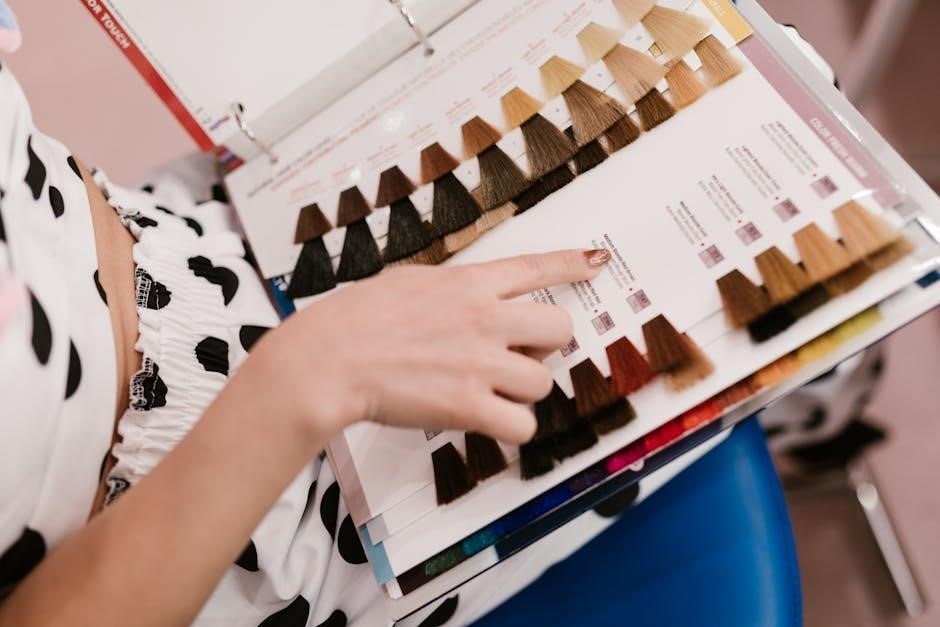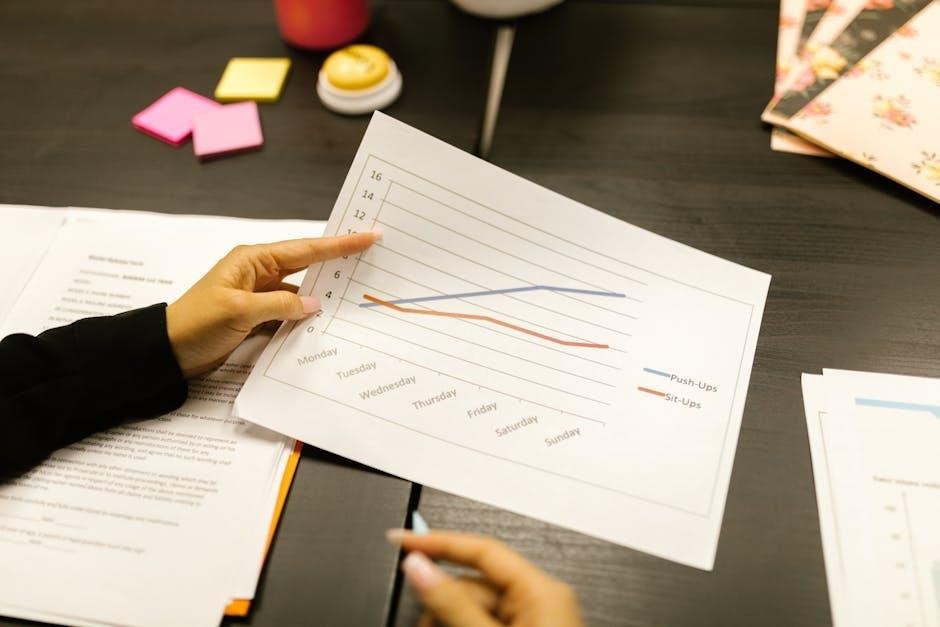Cupping therapy‚ an ancient healing practice‚ involves placing cups on the skin to create suction. This draws tissue up‚ aiming to promote blood flow‚ reduce inflammation‚ and alleviate pain. Understanding its history and modern applications is key.
Overview of Cupping Therapy
Cupping therapy utilizes specific points on the body to address various ailments‚ with the back being a primary focus. A cupping points chart provides a visual guide‚ mapping locations corresponding to organs and energy pathways. These charts are essential for practitioners to target areas of qi deficiencies‚ stagnations‚ and muscular issues. Understanding these points is crucial for effective treatment‚ allowing for precise application and optimal therapeutic outcomes. For musculoskeletal pain‚ specific anatomical points have been identified. Cupping on the upper back can also benefit lung health by releasing stiffness and stress. The back cupping points chart is a key element in effective cupping.

Cupping Points and Their Significance
Cupping points are specific locations on the body used in cupping therapy. These points often correspond to acupuncture points or areas of muscle tension‚ playing a key role in targeted treatment.
Understanding Cupping Points on the Back
The back is a common area for cupping therapy due to its large surface area and concentration of muscles. Cupping points on the back can address various ailments‚ including muscle pain‚ stiffness‚ and respiratory issues. A cupping points chart is essential for locating these specific points accurately.
These charts often depict the relationship between cupping points and corresponding organs or body systems. Understanding the location and significance of these points allows practitioners to tailor treatments to individual needs. By using a chart‚ therapists can effectively target areas of stagnation or imbalance‚ promoting healing and overall well-being. Proper cupping placement is crucial for optimal results.
Hijama Points Sunnah and Their Locations
Hijama‚ or wet cupping‚ involves making small incisions to release stagnant blood and toxins. Certain points‚ known as Hijama Points Sunnah‚ hold special significance in Islamic tradition. One such point is located between the shoulder blades‚ believed to aid in toxin removal and alleviate muscular pain.
Other notable Sunnah points include Al-Katifain‚ located on the fifth and sixth vertebrae. These points are thought to be beneficial for various conditions‚ promoting overall health and well-being. Accurate identification of these points‚ often guided by a cupping points chart‚ is crucial for performing Hijama according to Sunnah principles. These practices aim to purify the body.

Cupping Techniques and Applications
Cupping therapy encompasses diverse techniques‚ from dry to wet cupping (Hijama). Dynamic and magnetic cupping offer unique applications‚ while facial cupping targets aesthetics. Each method serves specific purposes‚ contributing to varied therapeutic outcomes.
Dry Cupping vs. Wet Cupping (Hijama)
Dry cupping involves creating suction with cups on the skin‚ promoting blood flow and muscle relaxation. It’s a non-invasive approach focused on stimulating circulation and easing tension. Wet cupping‚ or Hijama‚ includes making small incisions after suction to release stagnant blood and toxins. This method is believed to detoxify the body and address specific ailments‚ supported by Prophetic tradition.
The choice between dry and wet cupping depends on individual needs and preferences. Dry cupping is often preferred for general muscle pain and relaxation. Hijama is chosen for deeper detoxification and addressing specific health concerns. Both require understanding of cupping points.
Dynamic Cupping and Shake/Rotation Cupping
Dynamic cupping involves moving the cups across the skin’s surface after suction is applied‚ acting like a massage to release muscle tension and improve lymphatic drainage. This technique is particularly effective for addressing larger areas of muscle stiffness and promoting better circulation. Shake/rotation cupping involves gently shaking or rotating the cups while they are in a static position on the skin.
This method is useful for softening scars‚ deep tissue work‚ trigger points‚ and myofascial release. Trigger point cupping is effective for bulky muscles‚ where specific locations are targeted. Understanding the cupping points and a lymphatic drainage chart is valuable.
Magnetic Cupping and Facial Cupping
Magnetic cupping uses cups with embedded magnets‚ believed to stimulate acupressure points and enhance energy flow. This technique combines cupping’s suction with the principles of acupressure‚ potentially offering a synergistic effect. It is believed to be able to stimulate acupressure points and energy flow. Facial cupping is a specialized technique applying smaller cups to the face.
This gentle suction aims to improve blood flow‚ reduce puffiness‚ and minimize wrinkles. Facial cupping enhances circulation and promotes lymphatic drainage‚ which may contribute to a rejuvenated appearance. Understanding the cupping points can help in providing a better outcome.

Cupping Marks: Colors and Interpretation
Cupping marks vary in color‚ indicating different conditions. Light pink suggests good circulation‚ while darker shades may signify stagnation or deeper issues. Understanding color nuances is crucial for effective interpretation.
Understanding the Colors of Cupping Marks
Cupping marks‚ often appearing after therapy‚ provide insight into the body’s condition. Light pink or red marks usually indicate good circulation in the treated area‚ signifying a positive response. Bright red marks might suggest increased blood flow or inflammation. Darker shades‚ such as dark red or purple‚ can indicate stagnation‚ toxin accumulation‚ or old injuries. Yellow or greenish marks often point to the presence of dampness in the body. The intensity and color of these marks help therapists assess the treatment’s effectiveness and tailor future sessions. Observing these marks is a crucial aspect of cupping therapy. These marks usually go away over time.
Cupping Therapy for Specific Conditions
Cupping therapy is explored for various ailments‚ from musculoskeletal pain relief to potentially aiding in weight loss. Its application targets specific body areas to address underlying imbalances and promote healing.
Cupping for Musculoskeletal Pain
Cupping therapy is recognized for its potential to ease musculoskeletal pain‚ a prevalent issue globally. The technique increases blood flow to sore muscles‚ delivering essential nutrients to encourage healing and reduce stiffness. Cupping is often applied to bulky muscle areas‚ differing from acupuncture’s precise point targeting near bones and nerves.
Effective trigger point cupping uses specialized tools like pistol-handle sets. While not all trigger points are appropriate due to anatomical constraints‚ cupping offers a profound action compared to acupuncture‚ making it a preferred choice for some. Research supports cupping’s effectiveness in managing musculoskeletal discomfort‚ with seven specific anatomical points identified for treatment.
Cupping for Weight Loss
Cupping therapy is explored as a complementary approach to weight loss by some practitioners. Specific cupping points‚ such as points 1‚ 55‚ 9‚ 10‚ 120‚ and 49‚ are believed to play a role in metabolic regulation. By stimulating these areas‚ cupping may address qi deficiencies or stagnations potentially impacting weight management.
It’s important to note that while anecdotal evidence exists‚ scientific research directly linking cupping to significant weight loss is limited. Cupping can support overall well-being‚ which in turn‚ can improve lifestyle choices. For a comprehensive weight management strategy‚ combine cupping with a balanced diet and regular exercise. Further investigation is needed to fully understand cupping’s weight loss mechanisms.
Cupping placement charts are vital resources‚ mapping specific locations on the body for effective treatment. They aid practitioners in targeting areas related to organs‚ qi deficiencies‚ and pain management.
Importance of Cupping Placement Charts
Cupping placement charts are essential tools for both practitioners and individuals interested in cupping therapy. These charts provide a visual guide to specific cupping points on the body. Accurate placement ensures effective treatment‚ targeting specific conditions. The back cupping points chart‚ for instance‚ maps locations corresponding to various organs. Charts assist in addressing qi deficiencies‚ pain‚ and other ailments. Proper use of these charts is essential for optimizing therapeutic outcomes. They guide practitioners to apply cups strategically. This improves blood flow and promotes healing. The availability of detailed charts‚ especially in PDF format‚ enhances accessibility to this knowledge. Ultimately‚ cupping placement charts empower effective practice.

Cupping Therapy Charts and Resources
Availability of Cupping Points Charts in PDF Format
Cupping points charts are readily available in PDF format‚ making them easily accessible for practitioners and enthusiasts. These downloadable charts offer detailed visuals of cupping locations on the body. The PDF format allows for convenient printing and digital use. They cover various conditions‚ from musculoskeletal pain to weight loss. These charts provide a reference for optimal cup placement. Access to PDF charts enables practitioners to enhance their cupping therapy knowledge. These resources are essential for effective treatment planning and execution. They provide information about Hijama points Sunnah. They enhance understanding of the therapeutic benefits of cupping. Digital availability promotes wider adoption. With a chart of cupping points‚ one can improve their practice efficiently. The PDF format ensures portability and easy sharing.


